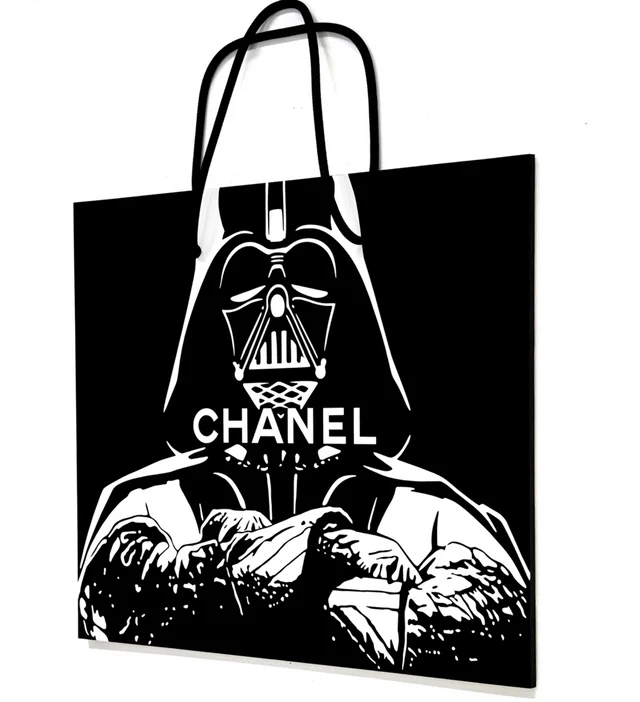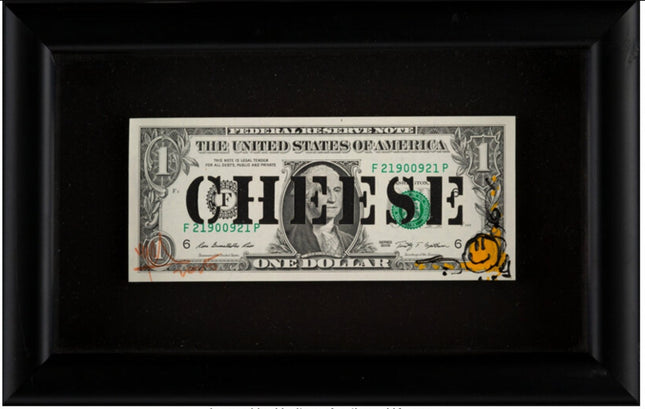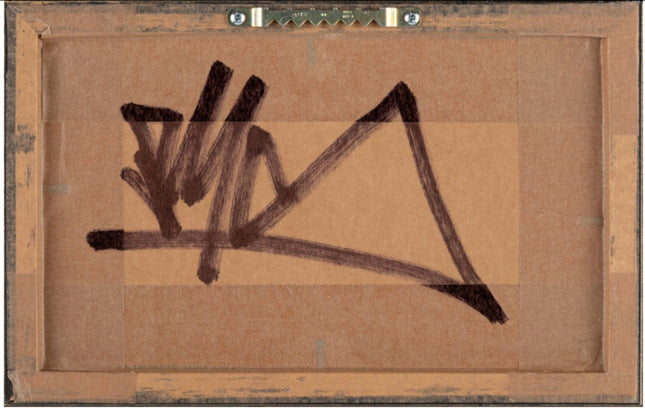
Stencil Fine Art


RYCA- Ryan Callanan Cheese Dollar Original Mixed Media Painting by RYCA- Ryan Callanan
Cheese Dollar Original Stencil Cut Dollar Bill Mixed Media One-of-a-Kind Painting Artwork Framed by Popular Street Art Pop Culture Artist RYCA- Ryan Callanan. 2017 Signed Original Artwork Size 6x2.5 RYCA Cheese Dollar Stencil cut dollar bill 2-1/2 x 6-1/8 inches (6.4 x 15.5 cm) Signed on lower right corner. Framed Dimensions 6.25 X 9.75 Inches. RYCA's "Cheese Dollar" as a Statement in Street Pop Art & Graffiti Artwork The "Cheese Dollar" by RYCA, a piece by Ryan Callanan, is a compelling embodiment of the fusion between street pop art and traditional currency. This one-of-a-kind mixed media artwork, signed and created in 2017, encapsulates the spirit of street art's incursion into the world of pop culture and economic commentary. At the dimensions of 6x2.5 inches, with a framed presentation extending to 6.25 x 9.75 inches, it is a testament to Callanan's work's meticulous craft and thought-provoking nature. In "Cheese Dollar," RYCA utilizes the stencil cut technique on an actual dollar bill, a medium that serves as an icon of commercialism and capitalism, reimagining it with a whimsical yet pointed message. By altering this ubiquitous symbol of value, Callanan injects humor and critique into the conversation about money's role in modern society. The artwork's title, "Cheese," a colloquial term for money, further plays on the intersection of language and symbolism often explored in street pop art. Significance of Mixed Media in RYCA's Work The mixed media nature of "Cheese Dollar" indicates RYCA's innovative approach to street pop art, blending non-traditional materials and techniques to create something entirely new. Using an actual dollar bill as the canvas for this piece challenges the viewer to reconsider the value we ascribe to currency and the objects we deem worthy of artistic transformation. Callanan's signature on the lower right corner is a seal of authenticity and a claim of the artist's role in transforming the object. This piece by RYCA reflects the artist's broader engagement with consumerism, value, and pop culture themes. By appropriating and altering currency, RYCA's "Cheese Dollar" becomes a vehicle for social commentary, aligning with the tradition of street pop art and graffiti artwork meant to provoke and engage public discourse. The choice to frame this piece elevates it from a mere object of transaction to a protected and valued piece of art, further complicating its interpretation and significance. RYCA's Ongoing Influence in Artistic Circles RYCA's "Cheese Dollar" symbolizes the artist's ongoing influence in street pop art and graffiti artwork circles. Through such works, Callanan continues challenging perceptions and engaging viewers with his clever blend of cultural references and commentary. The piece contributes to a dialogue on the materialism inherent in contemporary culture, using art to question and critique the systems of value that dominate our society. As street pop art and graffiti artwork continue to evolve, artists like RYCA play a crucial role in steering the conversation and challenging the status quo. Works like "Cheese Dollar" ensure that the discourse remains as dynamic and multifaceted as the art forms, offering new perspectives and insights into the complex interplay between art, culture, and economics. Through his art, RYCA captures the essence of the times and shapes the future of how street pop art is perceived and understood.
$637.00



